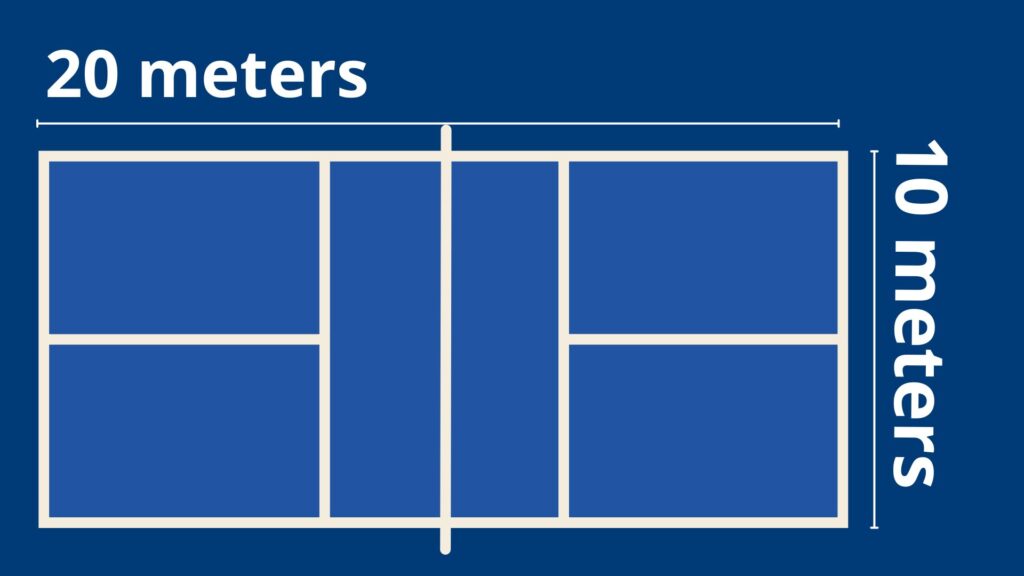Padel Tennis, or simply padel, is a rapidly growing sport that combines elements of tennis, squash, and racquetball. It is played extensively in Spanish-speaking countries and is gaining popularity worldwide. Understanding the rules of padel is crucial for both beginners and experienced players. This guide will provide you with an in-depth look into padel tennis rules, including the use of walls, point structure, and more.
What is Padel Tennis?
Padel tennis is a racquet sport typically played in doubles on an enclosed court about one-third the size of a traditional tennis court. It uses solid paddles instead of strings and a tennis ball with slightly less pressure.
Court Dimensions
The dimensions of a padel court are as follows:
- Length: 20 meters (65.6 feet)
- Width: 10 meters (32.8 feet)
The court is enclosed with walls, and the height of the walls vary: the back walls are 4 meters high, while the side walls are 3 meters high.
Additionally, the net in the center of the court is approximately 0.88 meters (2.9 feet) high.

Basic Rules of Padel Tennis
1. Court and Equipment
- Court Size: The padel court measures 20m long and 10m wide, enclosed by walls.
- Walls: The walls are integral to gameplay, made of glass, mesh, or a combination.
- Net: The net divides the court and is slightly lower than a tennis net.
- Racquet: Players use a perforated padel racquet.
- Ball: A depressurized tennis ball is used.
2. Start of Play
- Serve: The serve is underhand and must be hit at or below waist level. The ball must first bounce on the court and then land in the opponent’s service box diagonally across.
- Second Serve: Players get a second serve opportunity if the first serve is a fault, similar to tennis.
3. Scoring System
Padel uses the traditional tennis scoring system:
- Points: 0 (Love), 15, 30, 40, and Game.
- Deuce: At 40-40, it’s called a deuce. A player must win two consecutive points to win the game (advantage and game point).
- Sets: A set is won by the first team to win six games with at least a two-game lead. A tie-break is played if the score reaches 6-6.
- Matches: A typical match is best of three sets.
4. Use of the Walls
One of the defining features of padel tennis is the use of walls:
- In-play: After the ball bounces on the court, it can hit the walls. Players can use the rebound from these walls to return the ball.
- Glass Wall: The glass wall is essential in extending play and adds a strategic element, allowing for angle shots and rebounds.
5. Ball in Play
- Rallies: Once the serve is returned, the ball is in play. Players must hit it over the net into the opponent’s court.
- Out-of-bounds: If the ball hits the surrounding wired fence before bouncing, it’s out.
- Double Bounce: The ball can only bounce once on each side before being returned.
Advanced Strategies
1. Positioning
Players should stay closer to the net when attacking and move back defensively during opponents’ attacks. Cohesion and teamwork are key, as padel is predominantly played in doubles.
2. Wall Strategy
Utilizing the walls can turn the tide of the game. Players should practice hitting the ball at angles that force opponents to make tough returns off the back and side walls.
3. Communication
As a doubles game, clear and consistent communication with your partner ensures better court coverage and more strategic play.
Common Fouls
- Foot Fault: Stepping over the baseline before hitting a serve.
- Net Touch: Touching the net while the ball is still in play.
- Wrong Serve: Serving the ball above waist height or not letting it bounce first.
Padel tennis provides an exciting blend of skill, strategy, and physicality. Understanding the rules is fundamental to enjoying the game and competing effectively. Whether you are a seasoned tennis player or new to racquet sports, padel offers a unique and engaging sporting experience.